Latest Posts by lrs35 - Page 15
Resources For Worldbuilding

Culture & Society
Creating Fictional Holidays
Music For Your Fantasy World
Creating Religions & Belief Systems
How to Design Your Diabolical Cult
Historically Accurate Sexism in Fantasy: Let’s Unpack That
Debate with the Squirrels: Sexism in Fantasy
Feudalism
Using Politics In Fantasy Fiction
Mythic Justice – Crime and Punishment in Your Fantasy World
Government Worldbuilding
Realistic Political Strife
A Politics Of Worldbuilding
Language
Creating a Language
The Language Construction Kit
The International Phonetic Alphabet – Audio Illustrations
Fantasy Name Generator
Geographic Names
Medieval Names Archive
Squid Name Generator
Model Languages
Xenolinguistics
History
Prehistory
Mythos
History
Today
Myths, Creatures, and Folklore
Encyclopedia Mythica
The Ancient History Encyclopedia
Using History as Inspiration for Fantasy
Victorian Era Family Day Life in England
Peasant Life in the Middle Ages
Everyday Life in the Middle Ages
English Monarchs
Feudal Japan
The Story and Structure of the Iroquois Confederacy
Science + Geography
Dimensions
Solar Bodies
Climatology
Planetary Geography
Water Geography
Cartography, Maps, Star Charts, and Writing
Fundamentals of Physical Geography
Dating of Middle-earth events, using Precession of the Equinoxes and Tidal Friction
Orbital Operations in Science Fiction
Planet Designer
Artificial gravity calculator
Natural gravity calculator
Selden’s Catalogs of Objects for Celestia
Medieval Technology
Defining the Source, Effects, and Cost of Magic
How to Create a Rational Magic System
Miscellaneous
/r/worldbuilding
Fantasy World Generator
SciFi World Generator
Focused Ambiguity: Using Metaphor in Fantasy Writing
Space Engine
Terragen
The Five foundations of Worldbuilding
Setting the Fantastic in the Everyday World
Support Wordsnstuff!
If you enjoy my blog and wish for it to continue being updated frequently and for me to continue putting my energy toward answering your questions, please consider Buying Me A Coffee.
Request Resources, Tips, Playlists, or Prompt Lists
Instagram // Twitter //Facebook //#wordsnstuff
FAQ //monthly writing challenges // Masterlist
How to write a novel
I was talking to a girl at ComicCon, the kind of person who has a million creative projects at the same time. As many people do, she has a story she wants to write, with amazing characters she wants to share with the world, but writing is hard and a first novel can be daunting. Here’s what I told her.
Now, this applies to the people who REALLY want to see their story done. These are the main pillars of the cathedral that is your story. Let’s begin.
1- YOUR GOAL IS TO WRITE A COMPLETE FIRST DRAFT. It will be shit. But it will be complete. You can build on it and rewrite, but the most important thing is to WRITE TILL THE END OF THE STORY.
2- SIT DOWN AND WORK. That’s the difference between writers and the million people who say they have a story that they’ll write someday.
Alright, let’s get technical, and start by the end.
3- Art is about causing your public to have emotions. Decide right now what emotion you want to leave your readers with when they close your book. Is it happy, sad, bittersweet, hopeful? Pick one. (This can be changed later if you rewrite and find some other ending, but we are working on the first draft.)
— Maybe you have a nice gimmick, a cool idea for a story, like idk, ‘What if you cloned yourself and that clone took over your life’. This is interesting, but it’s not a story in itself. A story needs emotions. If you don’t pick the emotions you want your reader to feel, your idea is just a gimmick.
4- Now that you have the final emotion, decide your ending in accordance to said emotion. Are characters dying? Is the bad guy defeated? Is everyone splitting up or leaving together as a found family?
Then we go back to the beginning.
5- You probably have a million characters you all want to write. Pick one to be your protagonist. Yes, just one. Multi-characters stories are harder to write and demand experience and time. We want this novel to exist, and not be stuck in limbo forever. Anyway, people tend to always prefer side characters. Who has heard of someone having a protagonist as a fave?? Your side characters will be loved, no worry.
How to find your protagonist: It’s the person who makes decisions and makes the plot advance. Simple as that. Not to be mistaken for the leader of a group.
6- Now that you have your protagonist, you decide what is normal for them. That is your beginning.
7- And then, you break that normality in some horrible way that will prevent your protagonist to come back to it. That is your inciting incident.
Then we write the middle
8- You google Three-Act-Structure and get one of these babies.

(But Talhí, I hear you say, why should I follow this? It’s been overdone, and my story doesn’t follow this, and I have more to write than this… Well, that’s your choice. I’m not the boss of you. I’m just saying that this is a solid model for western storytelling and it’s been proven to work time and time again. You can create outside of this, but again, the main goal here is to get your novel on paper. This is a solid template.)
9- You probably have a general idea of events you want to happen in the story. Place these scenes where you feel they should go on the structure. Like, a confrontation with the main bad guy goes in climax of act three, and the confrontation with the main henchman goes to climax of act two, etc. Be mindful of the rising action and tension: a cute misadventure in the woods would probably go earlier in the story than a fight to the death.
10- Now, a secret: What separates bad writing from good writing? Bad writing is adding a bunch of events in the middle and have the characters go through them like a checklist of scenes. You can often see this in movies. But good writing links the events. Each and every event that happens has to be a result of your character making a decision. Then, an obstacle happens, and your character makes another decision, that leads to your next event/obstacle.
11- Another secret: A character will gain power, money, weapons and allies through the story. In videogames, this is useful to defeat the bad guy. But storytelling is not videogames. Having a superpowerful hero at the end is boring. What we want is keeping the reader in suspense. So you’ll have to take everything from them. Leave them powerless and alone. And then, break their leg. I mean, not literally, although you can do that too, but have them super disadvantaged. And then they can use the personal growth they got in the adventure to prevail. (What is more interesting: a character fleeing from a facility but with weapons and kickass moves, or a character fleeing the same facility without weapons or shoes and with a broken arm? Who do you root for?)
Other tricks
The rest of the crew: I go with what Pixar does for characters: Main character gets three or more characteristics. That’s your Woody. Second tier character gets two characteristics. That’s your Buzz. Third tier characters get one characteristic, like Rex and Mister Potato Head. Keep control of your character tiers and never give too much time to the lower tiers ones, it doesn’t help your story.
Herd your cats: Characters will want to wander in every direction, and you’ll want to follow them. Keep them in groups, and even though you can follow a side character for a scene or two, focus 80 to 90% of your story on your protagonist.
DND is not a novel: I’m pretty sure your campaign is super fun, but you can’t just put it on paper and call it a novel. It needs a narrative arc and serious editing. You can use a campaign as a base, but it needs to be worked as a novel, because you’re changing mediums, and a novel has different requirements.
That’s pretty much what I can remember for now. This should help you with the bones of your novel, and you can add the meat on that. I hope it helps. But honestly, the best advice I can give you is
SIT DOWN AND DO THE THING.
need refs/inspo for period clothing?
here you go:
Medieval (9th-15th century):
10th century and earlier
Romance (1000-1250)
11th century
12th century
13th century
more 13th century
14th century
more 14th
15th century
and more 15th century
Gothic (1150-1550)
Renaissance (1520-1650)
16th & 17th century
16th century
more 16th
Tudors (1500-1550)
more Tudors
Elizabethan Period (1558-1603)
Jacobean Era (1603-1625)
17th century
more 17th century
and again
and even more
this won’t stop
Baroque (1600-1750)
Georgian Period (1714-1830):
18th century
more 18th century
18th century women’s fashion
18th century men’s fashion
Rococo (1720-1770)
Classicism (1770-1790)
children 18th-19th century
Regency Preiod (1811-1820)/ Empire (1800-1820s):
1790-1820s
more stuff on regency and georgian era
even more
that’s not enough regency
and more
how is there so much
early 19th century men’s wear
early 19th century women’s wear
Victorian Period (1837-1901):
Romantic Era (1820-1840s)
Civil War Era/1850-1860s
1870-1890s
more victorian
Edwardian Period (1901-1910):
1900-1910s
Belle Epoque (1880-1910s)
more edwardian/belle époque
Modern:
1910s-1920s [Fashion between the World Wars]
1920s
more roaring 20s
so much 20s
1920s hairstyles
1930s
1930-1940s
1930-1950s
1950s
more 50s
1960s
1960-1970s
1980s
lots of periods in one spot/fashion through centuries:
here, here, and here is almost everything (and properly ordered)
also here with lots of historic fashion magazines
historic fashion
costumes of antiquity
more historical clothing
history of fashion
more history of fashion
“vintage” clothing
historic costumes
children’s historical fashion/toys
details
historic wedding dresses
historic assecoires (hats, shoes…)
hats
masks
parasols
lots of embroidery/jewlery
it indeed is western/european centric, I’m sorry for that, but for other cultures I simply don’t have so many references
How to strengthen your brain outside of school:
Maybe you’re not in school anymore, or you’re taking a gap year to save for school and you’re worried about keeping your brain fast and not getting too lazy. Well, here are a few helpful ways to make sure that you keep thinking:
Read books daily. Always have a book on the go. Reading keeps your brain active and it’s a cathartic activity. If you’re feeling up to it, read self-improvement books, or informative books.
Watch Ted Talks. Not only are these videos filled with so much great information, they are also inspiring.
Think about where you want to be in the future and start preparing for that. If this means that you need to spend hours of your life prepping the perfect resume so you can get a job or internship that takes you a step closer, then so be it. If you want to start your own business I’d highly recommend that you research the hell out of entrepreneurship.
Exercise. Exercise is important for the brain. It also keeps you happy, which in turn keeps you motivated.
Expand your vocabulary. Write down the words you don’t know in books and look them up, keep them on flashcards and memorize them. Big vocabularies are so important and they do come in handy.
Learn a new language. You can do this for free on apps like Duolingo or you can actually go and take courses somewhere. This could help you so much if you plan on doing University abroad or even getting a job there.
Watch documentaries. Netflix can currently teach you about the Vietnam war, World War II, the Earth, the global food trade etc. Learn.
Watch the news, listen to it or read about it. It’s important that we know what’s happening right now and memes can distract us, but try to be informed. Maybe you can make a difference.
Learn a new skill. It’s time to learn something you’ve always wanted to, whether it’s cooking, sewing, art, photography, yoga, mechanics etc. Teach yourself.
Do online classes to boost your grades for University.
Do online classes because you’re curious. Don’t stifle your curiosity. Curiosity is an asset.
Challenge yourself to do one productive thing every day. Don’t let yourself go to bed without mental stimulation for the day.

i’ve compiled a masterpost of tips that i have reblogged over the past few months and i thought it would be easier to have it all in one place. none of these posts are by me! huge thanks to everyone that has created these tips.
exams
finals: survival guide for the brave
pennyfynotes’ guide to exam season
study tips for exams
tips for doing well on exams
how to
how to accept and grow from failure
how to avoid education burnout
how to be an efficient test-taker
how to cope with exams
how to get straight a’s
how to get straight a’s 2
how to overcome failure
how to study effectively
how to study as a busy student
how to study when you don’t want to
how to utilise your studyblr
how to do well in a class taught by a crappy teacher
improve your handwriting
improve your life
productivity
5 easy productivity tips
7 productivity tips
productivity 101
the no bullshit guide to getting your shit together
school
4 tips for delivering a perfect presentation
a self care masterpost to help you get through school
school cheat sheet
back to school
back to school advice
habits of successful students
search google like a pro
useful things for those going back 2 school
study tips
6 things people don’t always tell you about studying
effective note taking
memory tips
my 3 steps in studying
memorisation tips for different types of learners
random study tips
study habits
study methods
study smarter
study tips
strategies for writing good conclusions
things not to do when studying
tips + tricks for learning a language
types of study breaks for every situation
unconventional study tips
when to use
work smarter, not harder
misc.
four rules for a disciplined life
self discipline tips
self soothing techniques
small gestures of self-love
tips on how to get up earlier if you aren’t a morning person
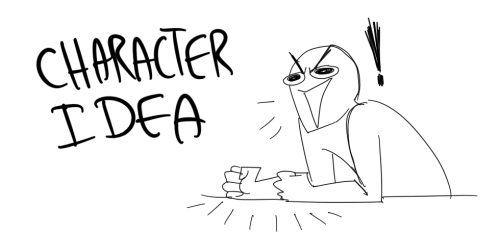
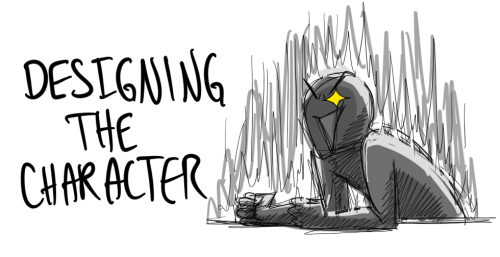

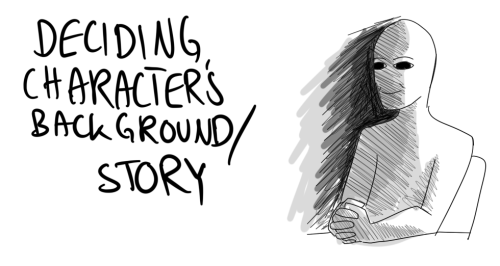
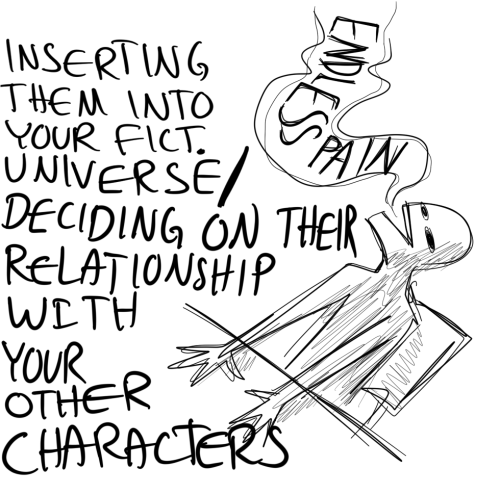
the suffering never ends
60 Awesome Search Engines for Serious Writers
a collection of study tips
i’ve been really into browsing through other ppl’s blogs looking at study tips posts, reading through them to glean an idea of how other people make their study time more effective, and i wanted to combine them all in one place for easy referral so here goes ;;
what to do when you feel like you just can’t keep studying
how to feel good about yourself when school is kicking your ass
top tips for dealing with a bad grade or failing class
an overview of stephen covey’s prioritization matrix
a guide for the school year
how to make a stress-free exam study plan
college tips that actually help
quickfire study tips
tips for a more productive session
how i study
general study tips
more study tips
5 revision methods to try
tips for success
how to handle having too much to do
ANATOMY STUDY GUIDE 101

So studying anatomy is nothing like any other topic, especially when you study it at uni level, where they expect you to know every single small component of the body! So this guide is going to be concerning the musculoskeletal system and the nerves (PNS) and arteries in the body.
I have mentioned some of these tips before but I will put them in here aswell and so this can work as sort of masterpost. This is like a more “overall” type of masterpost. So if you want to have topic specific posts for example for nerves and arteries then let me know.
1. Find a study partner. First and foremost anatomy is so much easier when you are two dealing with it. Me and my study partner used to do anatomy spots together and by doing it two people together you can discuss what it could possibly be. You get to hear their train of thoughts which sometimes can be better than yours. Also you will have someone to quiz you and correct you when you say something wrong.
2. Accept that it takes time. First step to learning anatomy is dedicating a lot of time. It is not easy, you are cramming so much information into your mind and for it to stay there you will have to go over the same topic again and again and again. And I know it is really frustrating and you are going to spent maybe 10 hours trying to figure out the muscles of the leg and then next week when you review it again it will feel like a whole new topic, but this is all a part of the proces, just keep revising again and again and again.
3. The Atlas is your best friend. Invest in a good atlas, they are a little expensive but they work wonders because first of all they give you an image of what you study. And usually the text book images are not enough. In an atlas you will have “isolated” images but you will also have images where relations are shown. HOWEVER if you dont want to buy an actual atlas then maybe buy Complete anatomy which is a computer program that I also reffered to in my “5 sites every med student should know about” post. Here you can play around with the structures, view it from different angles and add on to it with other nearby structures or remove structures.
4. Say it out loud. Pretty self explanatory.
5. Create an overview. Rather than focusing on the details try to focus on creating an overview. Anatomy is already so difficult so dont complicate things for yourself. And if you know the basics then learning the details will be so much easier.
6. Use a whiteboard. Speaking of creating an overview, try using a white board for this. It is such a good way for creating an overview. I think because deleting and writing is so easy it kinda makes it less stressful than writing in a note book where ofcourse you worry about the aesthetic. Also try to do this with your study partner. You can plan on studying a topic together so lets say for example the muscles of the leg, you both at home study it, try to memorize it, look at it in an atlas and then you two meet. Now when you meet you get infront of a white board and start talking and writing about what you guys think is important and when you guys cant go any further then grab your notes and then add more on to the board.
7. MAKE IT VISUAL!. This is the most important step! Use bones, pay attention in your dissection classes, if you have the upportunity to touch, feel and look at structures then DO IT! This is the best way to learn. Spot as often as you can.
8. Make up rules. you can find a lot of them online, or just make some up yourself, me and my study partner did, for example the muscles M. erector spinae: I (m. iliocostalis) Like (m. longissimus) Standing (m. spinalis). If you turn it into a “game” then remembering it will be much easier.
And most importantly dont stress your mind that much. Allow yourself to take breaks, because over feeding your mind with knowledge in a short period of time can also be very damaging since you will waste time and not remember most of what you studied.
Good luck, stay motivated and stay dedicated
Love
Dunia
Advice for writing about small towns
So I come from a small (midwestern) town. And I mean - an actual small town (less than 1,500 population). I’ve lived in towns of under 500 population, and in towns of about 2,500 population, and in towns of 15k population, and in cities of 100k, and currently in a 700k city.
So here’s some things about small towns you might not know if you’ve never lived in one:
If it’s got a population higher than 30 thousand, it’s not a small town. It’s just a town. Hell, I’d probably argue that if it has a population higher than 10 thousand it’s not small town, but I’m being generous. However the people in towns 30k–50k probably think they’re in a small town (they’re not).
The experience is vastly different depending on how far you are from a small-large city. And by that I mean - the people are vastly different.
Are you less than 60min drive to a city of 80k+ population? the people are probably less likely to be farmers, more likely to work in said small-large city and commute (which doesn’t mean that everyone commutes or that no one is a farmer). The people probably lean slightly to the right of the closest city, but aren’t necessarily staunch conservatives. The town sizes probably bottom out around 2k min.
Are you more than 2hrs drive from a city of 80k+ population? The town is more self-sufficient. Most work within their small town or a nearby small town. Depending on the terrain, more people are farmers. They’re probably mostly conservative, both socially and fiscally. The town sizes could be as small as 300 people.
The farther from the city, the more likely to be conservative, more likely to be farmers (depending on the terrain).
Population 15k+:
This town probably has a (singular) hospital, several doctor’s offices, probably a dozen department stores - and if it’s rural enough, probably a couple kinds of hardware/diy type stores (lowe’s, menard’s, home depot etc.)
There are several options for vets and at least one emergency vet
1-2 dozen hotels
If it’s got anything touristy, double the hotels (2-3 dozen) - touristy being water, especially large lakes, hiking trails, fesitvals, nearby ski resort - any thing that would draw people there on vacation, even if it’s only people from that region
Also add a “down town” area - boutiques, nice restaurants, probably a theatre
It has at least 4 options of elementary schools, and 3 options each for middle and high schools. It might have a community college (but probably not). There are private or charter options, specifically for religious students
There are multiple denominations of churches (catholic, lutheran, baptist, episcopal etc). Depending on ethnic make-up, it may or may not have a synagogue. It probably won’t have a mosque.
If it’s in a rural-ish area (the closest towns are all smaller) it probably has some kind of shopping mall. If it’s the smaller town, it may not.
It’ll have several bars, probably clustered in a central location, with a few others a little farther out from that area.
This town has a few coffee shops (3-10), but may or may not have an actual starbucks. At least one is a local place, at least one is a chain (starbucks, dunkin, biggby).
People drive everywhere. There is a bus system, but only the “down town” area would have issues finding parking. Most businesses/hotels have their own parking lot.
Most people live in houses but there are a few (3-7) apartment complexes, most of which are several buildings
There will be lots of restaurants, mostly chains or small mom & pop places, with at least a couple niceish options
This town might even have its own airport, but likely only serves regional flights to “nearby” larger towns/cities. Regional means like, less than 2hr flights, so that’s probably a bigger distance than you’d think.
There are dozens of gas stations and at least a dozen fast food places
Is it on a freeway? increase the gas stations, fast food places, department stores etc.
This town probably has a rec-type center with a community pool and courts and what not. There are several options of gyms.
Population 10k ish:
May or may not have a hospital - if it does, it’s small. A few doctor’s offices, a couple of department stores, at least one hardware/diy type
A few vets, may or may not have an emergency vet
a dozen or so hotels. again - double that if it’s got smth that would attract people, especially water.
may or may not have a “down town” area
2-4 options at least of elementary, 2-3 options of middle and high school. No community college.
Still at least a few options of churches. Still might have a synagogue, still probably doesn’t have a mosque.
Probably doesn’t have a shopping mall, but might have a “business district - basically a few intersections with most of the stores, hotels, and restaurants.
Probably has at least two, maybe three coffee shops. At least one is a chain.
Probably doesn’t have its own bus system unless it’s near enough to a town of 15k+ or more - people drive everywhere. There’s plenty of parking.
Most people live in houses, but there are a couple of apartment complexes. Mostish of the houses have yards, but some might not.
A few options of restaurants, but maybe only 1-2 niceish places. A couple chain, a couple mom & pop.
It would be strange for this town to have an airport. May have a landing strip at most, but unlikely.
There are probably half a dozen to a dozen gas stations. Several fast food places.
Is it on a freeway? increase the gas stations, fast food
This town might have a community rec center w/pool. Still a couple options of gyms.
Population 5k ish:
This town doesn’t have a hospital. It probably has 1-3 doctor’s offices. At least one department store
2-3 vets, likely no emergency vet
3-8 ish hotels or inns
Might have a quaint but very small “down town” area
Likely only 2 options of schools, maybe only one high school. Possible to go to school with same people your whole life
2-3 options for churches. Probably doesn’t have a synagogue unless there’s a large Jewish population
There’s no shopping mall of any kind, but probably has an area where most of the businesses are - at most 2-3 intersections worth
Probably has a coffee shop or two, but might not. Could be a chain or a local - but probably a local.
There’s no bus system unless it’s near enough to a town of 15k+. People drive everywhere.
Most everyone lives in houses. Most if not all have yards. There might be 1-2 apartment complexes but maybe not.
There are a few restaurants - mix of chain and mom & pop places. Might have a nice restaurant, but only one.
There’s no airport.
There are probably 2-6 gas stations, maybe 1-2 fast food.
Is it on a free way? increase the gas stations and fast food.
Likely does not have its own rec center/pool, but probably has 1-2 options of gyms.
Population under 2k ish:
No hospital. Probably has one doctor’s office, but might not if it’s close enough to a larger “small” town. No department stores, but probably at least one, maybe 2 decent grocery stores. Could be a local chain or a mom & pop.
Probably has a vet’s office, but just one.
1-2 inns/motels. If it’s an older town, it has like, a street that’s mostly made of older style buildings and is the “down town” - just a couple of blocks
Just one school system - elementary through high school. Everyone goes through the same school - you probably graduate with the same people you went to kindergarten with
1-2 churches. Probably no synagogue
There is probably a generalish area where the store/post office/school/etc is, but those are probably just as surrounded by homes and yards as everything else.
This town probably doesn’t have a coffee shop, and if it does, it’s local, not a chain.
There’s no bus system unless it’s close enough to a town of 15k+. People drive.
There might be an apartment complex. Everything else is houses. The houses pretty much all have some kind of yard.
There are probably two restaurants, probably both local. Nothing fancy.
No airport.
Probably 2ish gas stations.
Is it on a free way? add a gas station and a fast food restaurant.
There’s no rec center (unless maybe an outdoor like, field type rec center), but still likely has at least one gym.
I could keep going down but I think you get the idea. If you’re writing about an actual town, do research on its population. If you’re making up a town, think about what size you need it to be to have the things you want (or don’t want).
If your “small town” has more than one hospital, it’s not a small town. If it’s got a population above 10k, there is definitely more than one (and likely, many) hotels.
Is it near decent-sized water (largeish lake, ocean)? People probably have vacation homes there. That increases property value and tourism. Even if it’s not a like, nationally-known vacation spot, people within 100-200 miles could likely make weekend trips there.
Is it the largest town within 75-100 miles, even if it’s under 20k? it’s probably got more department stores and other such industry bc it’s serving a population greater than its own. if there are other towns nearby of equal-to-larger size, it might need less of those things.
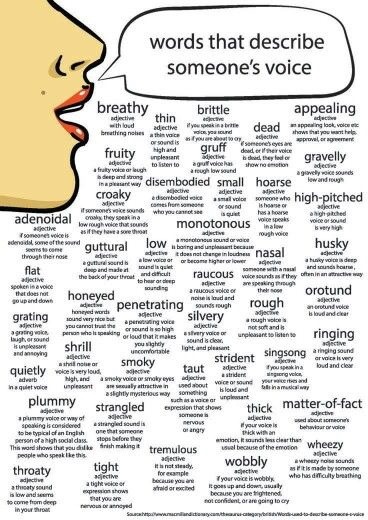
Thank you to whoever made this :) I felt like posting some writing tips.
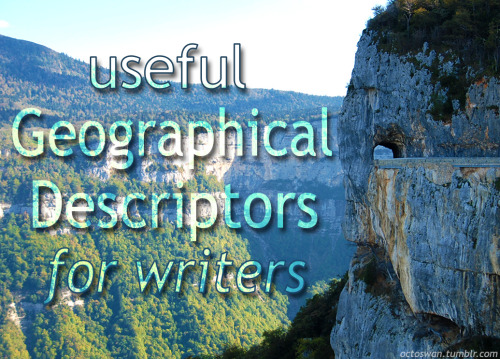


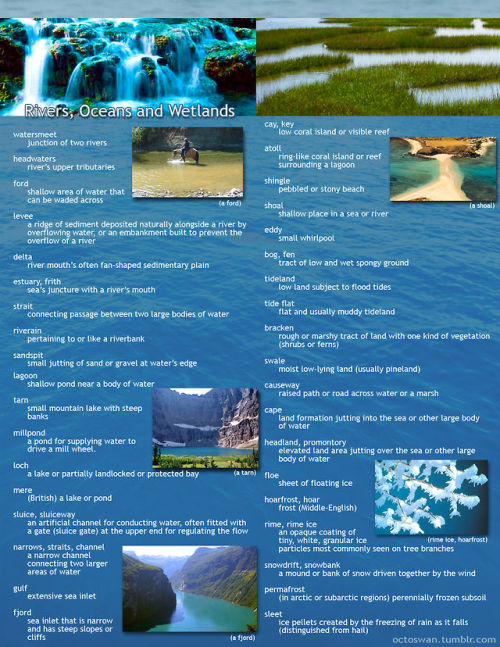
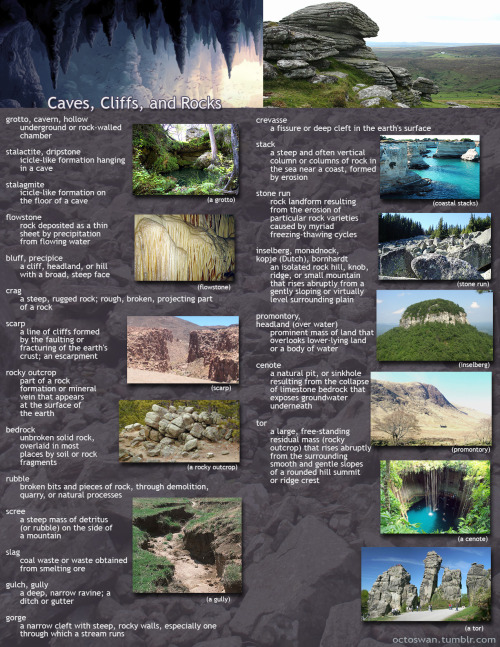
I made these as a way to compile all the geographical vocabulary that I thought was useful and interesting for writers. Some descriptors share categories, and some are simplified, but for the most part everything is in its proper place. Not all the words are as useable as others, and some might take tricky wording to pull off, but I hope these prove useful to all you writers out there!
(save the images to zoom in on the pics)
ATTENTION WRITERS
Google BetaBooks. Do it now. It’s the best damn thing EVER.

You just upload your manuscript, write out some questions for your beta readers to answer in each chapter, and invite readers to check out your book!
It’s SO easy!

You can even track your readers! It tells you when they last read, and what chapter they read!

Your beta readers can even highlight and react to the text!!!

There’s also this thing where you can search the website for available readers best suited for YOUR book!

Seriously guys, BetaBooks is the most useful website in the whole world when it comes to beta reading, and… IT’S FREE.
Fanfiction Trope MASH-UP
Rules: Send me two (2) tropes from this list + a ship and I’ll describe how I’d combine them in the same story.
Historical AU
Royal AU
Modern AU
Coffee Shop AU
Bar/Restaurant AU
Bookshop AU
Florist AU
Hospital AU
Dance AU
Airport/Travel AU
Neighbour AU
Roommate AU
Detective AU
Bodyguard AU
Criminal AU
Prison AU
War AU
Circus AU
Summer Camp AU
Teacher AU
Dystopian AU
Space AU
Performer AU
Soulmate AU
Fairy Tale AU
Massage Fic
Sick/Injured Fic
Proposal Fic
Wedding Fic
Holiday Fic
Birthday Fic
Pregnancy Fic
Baby Fic
Vacation Fic
Bathtub Fic
Text/Letter Fic
Coming Out Fic
Grief Fic
Survival/Wilderness Fic
Almost Kiss
First Kiss
The Big Damn Kiss
Dance of Romance
Flowers of Romance
Chocolate of Romance
Blind Date
Not a Date
Fake Dating
Fake Married
Arranged Marriage
Accidentally Married
Marriage of Convenience
Mutual Pining
Secret Relationship
Established Relationship
Awful First Meeting
Forgotten First Meeting
Accidental Eavesdropping
Interrupted Declaration of Love
Poorly Timed Confession
Love Confession
Love Confessor (Character A confessing their love for Character B to Character C)
Everybody Knows/Mistaken for Couple
Star Crossed Lovers
It’s Not You, It’s Me
It’s Not You, It’s My Enemies
Character in Peril
Heroic Sacrifice
Flirting Under Fire
Locked in a Room
Twenty-Four Hours to Live
Stranded on A Desert Island
Stranded Due to Inclement Weather
Huddling for Warmth
Bed Sharing
Did They or Didn’t They?
In Vino Veritas
Above the Influence
Anger Born of Worry
Green-Eyed Epiphany
The Missus and the Ex
Second Love
Intimate Artistry
Married to the Job
Innocent Physical Contact
I Didn’t Mean to Turn You On
Aroused By Her Voice
Erotic Dreams
First Time
Unexpected Virgin
PWP
Kink
Makeovers
Hair Brushing/Braiding
Sleep Intimacy
Scars
Time Travel
Curses
Magical Accidents
Accidentally Saving the Day
Guide: How to Skip Time in Your Story
Few stories take place during a short, unbroken chunk of time. Most stories take place in small chunks spread out over days, weeks, months, or years, which means there will be whole chunks of time not covered. So, how do you skip the time between those chunks?
Scenes and Chapters
With the exception of some very short fiction, most stories are broken into scenes, each of which encapsulates a particular moment or event. In longer fiction, like novellas and novels, related scenes can be grouped together into chapters, though sometimes a chapter contains only one scene. Either way, because scenes and chapters focus on particular moments or events, or a related group of moments or events, starting a new scene or chapter is a natural way to represent the passage of time in your story. In fact, unless otherwise stated, readers will naturally assume that time has passed between scenes and chapters–which doesn’t mean you don’t still have to make the transition between them.
The key to skipping time between scenes or chapters is to make the transition by doing two things:
1) Set up the time skip at the end of the scene or chapter by hinting at what is to come. For example:
As I gazed out the window at January’s first falling snow, I couldn’t help but wonder what the new year would bring.
2) Clarify time, place and (if necessary) POV at the beginning of the new scene or chapter, playing off of the set up from the previous scene or chapter.
The first week of January was over in a blink, and then I found myself back at school, dealing with all the problems I’d left behind during Christmas Break.
Notice how the set up at the end of the previous scene/chapter flows seamlessly into the scene transition at the beginning of the new scene/chapter?
Because the passage of time is expected between scenes and chapters, it’s not always necessary to be direct about how much time has passed. Especially if the amount of time passing is unimportant or already implied.
Direct:
Melinda finally dragged herself out of bed, painfully aware that her entire career hinged on her ability to pull this meeting off without a hitch. She hated the uncertainty of what lay ahead, hating even more the only thing she did know for certain: it was going to be one hell of a shitty day.
# # #
Two hours later, Melinda stood in front of the board, coffee in hand, trying to exude confidence she in no way truly felt. The tired, stoic faces of eleven other men and women gazed back at her, plainly ready for whatever it was she was about to unleash upon them. She only wished she felt as ready as they appeared to be.
Less Direct:
Melinda finally dragged herself out of bed, painfully aware that her entire career hinged on her ability to pull this meeting off without a hitch. She hated the uncertainty of what lay ahead, hating even more the only thing she did know for certain: it was going to be one hell of a shitty day.
# # #
All eleven faces of the other board members gazed back at Melinda, stoic and tired as she stood before them, coffee in hand, trying to exude a confidence she in now way truly felt. It was clear they were prepared for whatever she was about to unleash upon them, and she could only wish she was equally prepared.
In the second example, even though you don’t specifically say “two hours later,” it’s clear right away from the context that the time and place have changed. No one is going to read “all eleven faces of the other board members” and assume that they’re waiting for her in her bathroom as she goes in to brush her teeth the next morning. As often as possible, try to reserve the “two hours later” and “when she got back to the office” transitions for when the context would otherwise be unclear, or when those specific details (how much time has passed, a specific location) is immediately important.
And, if no time is passing between two scenes or two chapters, you can make that clear via context. For example, if one scene ends with Melinda falling asleep and then being woken up by a loud knock at her door, the next scene could continue with something like “Heart pounding from the shock, Melinda jumped out of bed to see who was at her door.” Now it’s clear no time passed in the next scene. But, since a new situation is beginning, it still warrants being its own scene.
Expository Time Skip
Sometimes you need to show a quick glimpse of something that happened but which doesn’t really warrant its own scene or chapter. In this case, you may need to illustrate the time skip using exposition within the scene. It may look something like this:
The first week of January was over in a blink, and then I found myself back at school, dealing with all the problems I’d left behind during Christmas Break. Not the least of which was the newly formed rift between me and Kristina, who was glaring at me from across the hallway as I spun the combination on my locker that first day back. I’d done my best to ignore her, shoveling my million textbooks out of my book bag, doing a quick check of my hair–which somehow managed to be both wet and frizzy with static–before grabbing my biology books and hurrying off under Kristina’s cold glare.
Later that day, at lunch, Michelina and I decided to eat lunch outside, even though it was thirty degrees and still snowing. Despite the wintry chill, it was warmer than the cafeteria with Kristina’s angry gaze constantly searching us out.
Terms such as: later that day, two hours later, the next afternoon, the following day, by the time the bell rang, when it was time to close, etc., allow you to show that time has passed without transitioning to a new scene or chapter. This allows you to cover smaller moments/events that don’t warrant their own space.
Whether you use a scene transition between two scenes or two chapters to show the passing of time, or whether you clarify the time skip through exposition, just pay attention to where you leave your readers before the transition/clarification, and where you take them. Make sure it’s clear, flows well, and wouldn’t leave anyone confused. Do that and you should be in good shape. :)
The Two Types of Pacing
Pacing is a tricky, tricky thing. Hopefully, by breaking it down into two schools of thought, we can better our understanding of maintaining effective pacing.
as requested by @whisperinghallwaysofmirrors
First, Some Definitions
According to Writer’s Digest, narrative pacing is “a tool that controls the speed and rhythm at which a story is told… [H]ow fast or slow events in a piece unfold and how much time elapses in a scene or story.“
Pacing can be a lot of things. Slow, fast, suspenseful, meandering, boring, exciting, et cetera et cetera. While we don’t want meandering or boring, getting it to be the other things can be a feat.
As I go through all of this, I would like to say that the number one thing you should be keeping in mind with the pacing of your story is the purpose.
What is the purpose of this story, scene, dialogue, action, arc, plot point, chapter, et al? This and only this will keep you on track the whole way through.
Without further ado, here are the two types of pacing…
Micro Pacing
This, to me, is the harder of the two. Macro pacing usually comes naturally with our understanding of overall story structure that we see in books and movies. Micro is much more subjective and labor-intensive.
The first step of every scene you write is to identify what kind of pacing it needs to be effective. Is a slower pace going to nail in the emotional tone? Is a faster pace going to convey how urgent the scene is? Is choppy going to show how chaotic it is? How much attention to detail is needed? Et cetera. And even with the scene’s tone, there are also tones within with action, dialogue, and narrator perception.
There is no one-size-fits-all trick to mastering pacing. All you can do is try to keep it in mind as you draft. Don’t let it consume you, though. Just get it down. After drafting, look at the pacing with a critical eye. Do important scenes go too fast? Are unnecessary things being dragged out? Is this scene too detailed to be suspenseful?
A lot of errors in pacing are quick fixes. The adding or removal of details, shortening or lengthening of sentences, changing descriptions. However, these quick fixes do take a while when you have to look at every single scene in a story.
Macro Pacing
Rather than the contents of a scene, this deals with everything larger. Scenes, chapters, plot points, storylines, subplots, and arcs. This is taking a look at how they all work for each other when pieced together.
One of the biggest resources when it comes to analyzing macro pacing is story structure philosophy. The common examples are Freytag’s Pyramid, the 3-Act Structure, Hero’s Journey, and Blake Snyder’s 15 Beats. They follow the traditional story structure. Exposition, catalyst, rising action, climax, and resolution (albeit each in different terms and specificity). Though some see it as “cookie-cutter”, 99% of effective stories follow these formats at a considerable capacity. It’s not always about how the story is told, but rather who tells it. But I digress.
Looking at these structures, we can begin to see how the tried-and-true set-up is centered around effective pacing.
The beginning, where everything is set up, is slower but short and sweet. The catalyst happens early and our MC is sent out on a journey or quest whether they like it or not. The trek to a climax is a tricky stage for maintaining effective pacing. Good stories fluctuate between fast and slow. There is enough to keep it exciting, but we’re given breaks to stop and examine the finer details like theme, characterization, and arcs.
The edge before the climax is typically when the action keeps coming and we’re no longer given breaks. The suspense grabs us and doesn’t let go. This is the suspense that effectively amounts to the crescendo and leads to the emotional payoff and release that follows in the resolution. The resolution is nothing BUT a break, or a breather if you will. Though it is slower like the exposition, it is longer than that because this is where we wrap everything up for total closure. This is what the reader needs, rather than what they want. So you can take your time.
Not every story has to follow this recipe step-by-step. Critically acclaimed movies such as Pulp Fiction, Frances Ha, and Inside Llewyn Davis* break the traditional structure. However, they still keep certain ingredients in it. Whether it be the concept of a climax, the idea of a journey, or the overall balance of tension and release.
If you’re struggling with the macro side of your story’s pacing, I would try to identify what the weakest areas are and see if applying these story structure concepts and methodology strengthens it at all. If not, it may be that your story idea doesn’t fit the “substance” requirement of an 80k+ word novel. It may need more or fewer subplots or an increase of conflict or more things getting in the MC’s way. You could also see if adapting it to a shorter medium (novella, et al) or a longer medium (series, episodics, et al) would alleviate the pacing issues.
*sorry all my references are movies and not books, but I’ve seen more movies than I’ve read books
In Short–
Pacing, both macro and micro, are incredibly subjective concepts. The only way to really find out how effective your story’s pacing is, is to look at it through the lens of traditional structures and ask for feedback from beta readers. How a reader,who doesn’t know the whole story like you do feels about pacing is the best resource you could have.



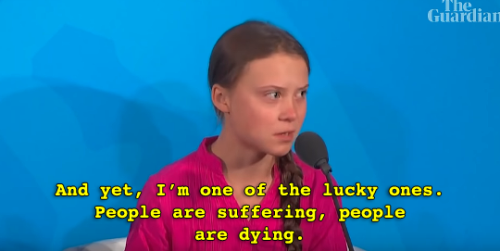



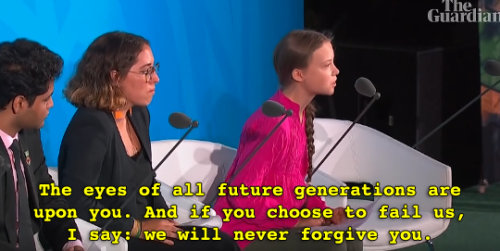


Guardian News: “‘You have stolen my dreams and my childhood with your empty words,’ climate activist Greta Thunberg has told world leaders at the 2019 UN climate action summit in New York.”
Writing Advice Posts: A Handy Reference Guide
(Updated 8/6/19) Hey all, I’ve got quite a few writing advice posts & answered Asks on my blog at this point, so I’m making this reference guide to make it easier to find what you’re looking for. Hope it helps!
Free Resource Library Downloads
All of these PDFs are available to download in my Free Resource Library.
Creating Character Arcs Workbook
Point of View Cheatsheet
Dialogue Checklist
Setting Checklist
Questions to Ask Before Hiring an Editor Printable Checklist
Proper Manuscript Format Printable Checklist
Short Story & Novel Submission Templates
General
8 Ways to Improve Your Writing
10 Best Books About Writing Fiction
How to Spot Bad Writing Advice: 6 Red Flags to Look For
“Show Don’t Tell”? Not Always. Here’s When to Use Summary
How to start a story
More about starting stories
The first sentence
Weak words
Why Just About Every Published Book in the World Does 57 Things That Just About Every Book About Writing Tells You Not to Do
Creative Nonfiction Cliches to Avoid
How to Read Like a Writer
The Writing Process, Writer’s Block, & Inspiration
To all the Writers Suffering from Depression
How to Train Yourself to Write Faster
Just a friendly reminder that creativity is difficult to quantify.
Quick Writing Tip: Make a Note to Your Future Self in Your WIP
Quick Writing Tip: Take Notes!
Just a friendly reminder that writing is not always a linear process.
Quick Cure for Writer’s Block: Lower Your Expectations
Set Realistic Goals
Your Skills May Need Time to Catch Up to Your Vision
It’s Okay to Experiment and Be Weird As Fuck
Surround Yourself With Supporters
It’s okay to take a break.
Your First Draft is Raw Material
Getting into “The Zone”
Vomit Brain
Writing from Your Imagination vs. Reality
Dealing with Criticism
Getting Bored with Your Own Writing
Getting past a block
Doing research on topics you don’t have first-hand experience with
Journalling about your writing
How to Keep Yourself From Editing As You Write
Advice for Getting Over a Writing Slump
Dealing with Procrastination
Character Development
Creating Character Arcs with the DCAST Method
What Does Your Main Character Want?
How to Activate Your Passive Characters, One Verb at a Time
How to Use Description to Show Character Development
How to Create a Non-Cliched First-Meeting Scene
The “It Depends” Post
Shifting internal goals
When to identify your character’s goal
Writing about normal people with normal problems
If you’re worried about your character being too similar to someone else’s character
Describing your characters without messing up your pacing
Story, Plot, & Pacing
Quick Plotting Tip: Write Your Story Backwards
Pause at the Threshold
How to Spot an “Info-dump”
Slowing Down the Pace of Your Story Without Boring Your Reader
Time Transitions
How to Create a Non-Cliched First-Meeting Scene
Creating Conflict
When & how to cut a scene
If you’re good at creating characters but awful at creating plot
When you’ve plotted your story but can’t get started
En Media Res
Writing to Your Ideal Reader
Deus Ex Machina
Foreshadowing
Finding an Ending
What to write between moments of conflict
Starting a story with waking-up scene
How to Know When You’re Done Outlining
Description, Setting, & Worldbuilding
How to Make Your Descriptions Less Boring
How to Spot an “Info-dump”
Adding Descriptions to Intense Scenes Without Messing Up Your Story’s Flow
How to Use Description to Show Character Development
Worldbuilding: How much is too much?
Modeling your fantasy world from stuff in the real world
Internal Consistency
Utilizing Sound
Point of View
How to Choose the Right Point of View for Your Story
A Beginner’s Guide to Multiple Point of View
6 Questions to Ask About Your Point of View
How to decide if you should use first person or third person
More point of view basics
Head hopping
How to Head Hop without Head Hopping
Dialogue
How to Improve Your Dialogue
3 Ways to Make Your Dialogue More Interesting
Starting a story with dialogue
Are You Using Too Much Stage Direction?
Which is Better: Exposition or Expository Dialogue?
Publishing & Sharing Your Work
7 Tips to Build an Audience for Your Writing
Pros and Cons of Self Publishing
Quick Publishing Tip: Don’t Bury Your Gold
How to Properly Format Your Manuscript for Publication
A warning about posting writing online that you intend to publish later
Advice for writers who are worried about people stealing their work or ideas
Getting feedback on your writing
How to Create a Cover Letter for a Literary Magazine or Journal
Editing
10 Questions to Ask an Editor Before Hiring Them
Quick Revision Tip: Read Your Writing Out Loud
How to Keep Yourself From Editing As You Write
Cut the fidgeting
Are you suffering from -ing disease?
Are you Using Too Much Stage Direction?
What “Editing” Really Means
Quick Editing Tip: “That”
Quick Revision Tip: Read Faster
Editing Tip: Dialogue
Tips for Editing a Story
Should You Use a Contract When Hiring an Editor?
Quick Tip: Up & Down
…if you find any broken links please let me know and I will fix them! xo
*I recently changed the name of my blog. All of these links should work, but if you come across a “Bucket Siler has moved!” page when clicking on a link inside an old post, there’s an easy way to find what you’re looking for: In the url, delete “bucketsiler,” write “theliteraryarchitect,” then hit return. Also, let me know about it & I will fix it :)
//////////////
The Literary Architect is a writing advice blog run by me, Bucket Siler. For more writing help, check out my Free Resource Library or get The Complete Guide to Self-Editing for Fiction Writers. xoxo
Any advice on back and forth dialogue? Like properly portraying an argument? I think all the spaces will get bothersome to the reader...
(Since arguments are the hardest type of back and forth dialogue to master, and other dialogue follows the same structure but in a more flexible manner, I’ll focus on arguments specifically…)
Writing an argument.
Everyone’s process for this is a little bit different, but here’s a look at mine, which has helped me reach the best end result (after many failed argument scenes in the past):
1. Dialogue. I like to write this as a script of sorts first, playing the scene in my head and only writing down the words and some vague comments regarding what the characters might be experiencing or doing. I leave breaks in the dialogue where the characters naturally pause from build ups of emotion, and add in all the em-dashes and ellipsis my heart desires (despite knowing a lot of them won’t make it through the reread, much less the final draft.)
2. Action. Not only does having your characters do things while they argue make the whole scene feel more realistic and plant it within the setting, but it also provides a great way for your characters to express things they don’t have the words to say. These “actions” can be facial expressions and body language, movement, or interaction with the objects in the setting, such as gripping a steering wheel too tightly or slamming a cupboard or tensely loading a gun.
3. Emotion. I save this for last because I find emotion very hard to write into narratives, but no matter when you write it or how you feel about it, feeling the pov character’s internal emotions is integral to the reader’s own emotional connection to the argument. Remember though, emotions should be shown and not told. Instead of saying the character is angry, describe what that anger is doing to them physically (how it makes them feel), and what desires it puts in them (how it makes them think.)
Other equally (if not more) important factors:
- Build tension slowly. Arguments will never be believable if the characters go from being calm and conversational to furious and biting in a single paragraph. The reader must feel the character’s anger build as their self-control dwindles, must hear the slight tension in their voice and the sharpness of their words as the scene leads up to the full blown argument.
- Vary sentence length. Arguments in which characters shoot single short sentences back and forth often feel just as stiff and unnatural as arguments where characters monologue their feelings for full paragraphs. If a character does need to say a lot of things in one go, break it up with short, emotional reactions from the other characters to keep the reader from losing the tension of the scene. Likewise, if characters don’t have bulk to their words, try including a few heavy segments of internal emotional turmoil from the pov character to make the argument hit harder instead of flying by without impact.
- Where did this argument start? Most arguments don’t really start the moment the words begin flying, but rather hours, days, weeks, even years before. If you as the author can’t pinpoint where the character’s emotions originated and what their primary target or release point is, then it’s unlikely the reader will accept that they exist in the first place.
- Characters want things, always. Sometimes arguments center around characters who vocally want opposing things, but often there are goals the characters hide or perhaps even from themselves. Think about what goals are influencing the characters in the argument while you’re writing it in order to make sure everything is consistent and focused.
Keep in mind that you don’t have to do all these things the very first draft. My arguments consistently have little emotion and even less build up until the second or third draft. As long as you return to these things as you continue to edit, the final result should feel like a fully fleshed out and emotional argument.
For more writing tips from Bryn, view the archive catalog or the complete tag!
Adding small moments of existence to your writing
What I’m talking about is proof of life outside your characters in your world. Not in the sense of ‘talking to the cashier at the checkout’, but things like:
Graffiti etched into a desk your character sits in during an exam
Realising that someone has come along and arranged the cans on the shelf so the labels say something stupid
Dirty vans that have ‘wash me’ written in the dried mud
A coin that has been stuck into a piece of gum on a handrail
Little things that show the world still goes on despite whatever is happening to the characters.
This helps make the world a world, not just a setting. There are other people with other lives doing stupid, funny, dangerous, things that in no way impact the protagonist. You don’t have to dwell on them, they can only be mentioned briefly in passing during the set up of a scene, but it will help create life within the background of the story and give the characters a chance to briefly think about something other than themselves/their situation.
What's your advice on writing a strong, solid chapter one? Something that will grab the reader's attention and make them beg on their knees for more?
Tips for Writing a Strong First Chapter
Note: in the examples, I’m using the second chapter as Harry Potter rather than the first, which was really more of a prologue.
1. Create a “snapshot” of your character’s normal life…
One of the most important things you can do in the first chapter is give your reader a sort of “snapshot” of your character’s life before the the inciting incident turns everything upside down. Otherwise, if we don’t know what their life is like before everything changes, the inciting incident won’t be a change. It’ll just be something that happens.
In Twilight, we saw Bella being the run-of-the-mill daughter of divorced parents. In Harry Potter, we saw Harry being the unwanted and much-maligned ward of muggle relatives, while struggling with emerging wizard powers. In Star Wars, we saw Luke being the bored farm boy, longing for heroism and adventure. In The Hunger Games, we saw Katniss taking care of her mom and sister by hunting for extra food for them with Gale.
2. Show us who they are–show us their strengths and their flaws…
Most stories feature a protagonist who changes in someway throughout the course of the story. This is the character arc, and it can either be positive (the most common) or negative. Positive story arcs stem from the character’s flaws that are established at the beginning of the story. While they have strengths, too, it’s the flaws that dominate and make their lives such a mess that the reader is anxious to see how their lives will change. The character will overcome those flaws through the events of the story, so in the end the reader can marvel at how far they’ve come and how much better their lives are as a result of this change. In a negative arc, it works in the exact opposite way. Sometimes there are static arcs, where the character doesn’t change but changes someone around them or their environment, and sometimes you get a little hybrid of both.
In Twilight, we see a girl who’s a little selfish, a little closed off, and very codependent. In The Hunger Games, we see a girl who feels helpless against the oppressive government making her life, and the lives of everyone she cares about, a living hell. In Star Wars, we see a boy who’s cocky and idealistic.
3. Show us who and what matters in their world…
Another important element that should be introduced in the first chapter is who and what matters to the main character. These are the initial stakes–the thing that motivates them into action when the world turns upside down. In some cases, the world turns upside down because something happened to them.
In Twilight, we meet Bella’s mom and dad, but in many ways, the absence of anyone else here is part of what serves as motivation for Bella to want her life to change and to want to belong to something bigger than herself. It’s much the same in Harry Potter, where the only people who really matter to him are people who died when he was a baby. In The Hunger Games, we meet Katniss’s mom and sister, her best friend Gale, and we learn about Katniss’s father and Gale’s family, and the boy with the bread. In Star Wars, we meet Luke’s Uncle Owen and Aunt Beru.
4. Show us their world…
Part of the point of the inciting incident is that it’s going to change the known world for the main character. This really dovetails with #1, because their normal life happens within this world. In some stories, a character’s “world” might be their work and home life or their home and school life. In other stories, their “world” might be the small village they live in and the plagued-by-evil-king kingdom the village is a part of.
In Twilight, Bella’s world was uprooted right at the beginning and exchanged for the tiny, perpetually overcast town of Forks, Washington. In The Hunger Games, Katniss’s world was District Twelve and the oppressive Capitol beyond. In Star Wars, Luke’s world was a moisture farm on the desert planet of Tatooine, part of a larger Civil War-wracked galaxy.
5. Start the story when something interesting is happening…
We often hear the advice “start in the middle of the action” or “begin the story with action” and this is often misinterpreted, either to mean you should start with the inciting incident or start with a big car chase or heart-pounding battle. Neither of which is true. Beginning the story with action just means you should start the story with something interesting happening rather than with a big info dump. That doesn’t mean you can’t include exposition in your opening, but weave the exposition into something interesting happening.
In Twilight, the story opens with Bella being dropped off at the airport by her mom so that she can move to Washington to live with her dad. In The Hunger Games, the story opens with Katniss getting ready to go hunting with Gale, then walking through her district on her way to meet him. In Harry Potter, we see Harry and the Dursleys getting ready for Dudley’s birthday party.
If you hit all five of these points in your first chapter, not only can you be sure to create a strong first chapter from which to launch the rest of your story, you can be sure your reader will have everything they need to start getting invested in your main character and the world around them. :)
Some aesthetic playlists for writing
For when you’re in an 80s teen montage
For when you’re in a jazz coffee shop in NYC
For when you’re on a quest to find the fae queen
For when you’re in a teen road-trip scene
For when you’re chilling on a spaceship hopping from planet to planet
For when you’re running along the roofs of renaissance Italy
For when you’re a farmhand taking his lunch break in the meadow
For when you’re a high end classy ass art thief
For when you’re kicking butt with the beauty and sass of a k-pop star
For when you’re attending a coronation ball for the crown prince
For when you’re going on an adventure
For when you and your best friends are trying to figure out life together
let me know if you want me to add more!!!
What's your opinion on writing from multiple perspectives? Like, one chapter would be from Bob's POV, and then the next from Shirley's, ect. Do you have any tips for this?
I love multiple POV stories! I really like when authors explore multiple characters and really give the readers a chance to take in the story from many perspectives.
Multiple POV stories work best when:
You have many plots. The more complex the story, the more information you need to feed the reader for the story to work. Sometimes it’s just not possible to get all that information through a single protagonist. Many protagonists, however, are better suited to learning all that information. Many protagonists - especially if they aren’t working together - are also better at screwing up plans and creating chaos.
The plot is character-based. A character-based plot means the story deals more with internal struggles than external struggles. If your plot is character based, you really want to show the reader what all the major characters are feeling. Again, a single protagonist probably isn’t privy to everyone’s emotions.
Tips:
Your POV characters don’t need equal time. And when I say equal time, I mean in chapter time or wordcount time. Devote time to the most important characters and most important situations. Do as the plot demands, not as the character demands.
Don’t double up scenes. One of my least favorite moments in multiple POV stories is when the author covers an event with one POV character, then goes back to the beginning of the event to cover it again with another character. If you want another character’s perspective, let them remember parts of the event or revisit as little of the even as you possibly can.
Work on voice. You want to keep those characters as distinct as possible. They are different people, after all. I have a voice tag here to get you started.
Divide the POVs. Not with that awful fanfiction.net **KATNISS’ POV** paragraph starter. Divide POVs by chapter or put a little divider thingy in between POVs if you’re switching in the middle of a chapter.
Keep track of information. Your POV characters will not know the same things because they live different lives and will be exposed to different situations. If your POV character suddenly knows something they shouldn’t, you’ll have a plot hole.
Try to avoid one-shot POVs. One-shot POVs are when a character gets one POV chapter, then no others. There’s nothing wrong with it, but it feels strange to hear from a character once and then no other times.
The plots should interact. Even if the POV characters never meet, their plots should have a common element: for example, a common struggle, a common character, or a common theme. This prevents the story from becoming a collection of badly patched short stories.

If you write a strong character, let them fail.
If you write a selfless hero, let them get mad at people.
If you write a cold-heated villain, let them cry.
If you write a brokenhearted victim, let them smile again.
If you write a bold leader, let them seek guidance.
If you write a confident genius, let them be wrong, or get stumped once in a while.
If you write a fighter or a warrior, let them lose a battle, but let them win the war.
If you write a character who loses everything, let them find something.
If you write a reluctant hero, give them a reason to join the fight.
If you write a gentle-hearted character who never stops smiling, let that smile fade and tears fall in shadows.
If you write a no one, make them a someone.
If you write a sibling, let them fight and bicker, but know that at the end of the day they’ll always have each other’s back.
If you write a character, make them more than just a character; give them depth, give them flaws and secrets, and give them life.

TIPS:
Tips For Characterization
21 Harsh But Eye-Opening Tips From Great Authors
The Importance Of Body Language
34 Writing Tips That Will Make You A Better Writer
Things Almost Every Author Needs To Research
Eight Short Story Tips
How To Stop Procrastinating
Ten Exercises In Creativity
How To Show (Not Tell)
Ten Ways To Avoid Writing Insecurity
Why Research Is Important In Writing
Five Ways To Get Out Your Comfort Zone
Seven Ways To Use Brain Science To Hook Readers And Reel Them In
The Difference Between Good And Bad Writers
Five Essential Story Ingredients
Formatting Your Manuscript
Four Ways To Have Confidence In Your Writing
99 Ways To Beat Writers Block
You’re Not Hemingway, Helping You Develop Your Own Skill
Best Apps For Writers
Online Whiteboard
This Sentence Has 5 Words
GRAMMAR (WORDS):
Urban Legends From The World Of Grammar
20 Common Grammar Mistakes
Synonyms For Said
Alternatives For But
Alternatives For Angry
Alternatives For Whispered
200 Words To Describe Light
45 Ways To Avoid Saying Very
Colour Names
Other Ways To Say…
Lay vs Lie
Make Words Longer
Words And Meanings
Common English Mistakes
Online Etymology Dictionary
Tip Of My Tongue
Cliche Finder
NAMES:
7 Rules Of Picking Names For Fictional Characters
Names In Different Time Periods
Behind The Name
Meaning Of Names
Fake Name Generator
Random Name Generator
Quick Name Generator
Fantasy Name Generator
Baby Names Country
Muslim Names And Meanings
Indian Names And Meanings
Name Playground
NOVEL:
How To Rewrite
Editing Recipe
How To Write A Novel
Writing 101: Revising Your Novel
Revising Your Novel: Read What You’ve Written
Finishing Your Novel
Novel Outlining 101
Outline Your Novel In 30 Minutes
13 Most Common Errors On A Novels First Page
How To Organize And Develop Ideas For Your Novel
CHARACTER DEVELOPMENT:
Family Tree Maker
Tips For Characterization
Character Trait Masterlist
Character Bio Help
Character Writing Exercise
123 Ideas For Character Flaws
Three Ways To Avoid Lazy Character Description
How To Create Fictional Characters
Writing Magical Characters
Character Development Sheet
Character Development Worksheet
Character Chart
Character Chart For Fiction Writers
100 Character Development Questions For Writers
Ten Questions For Creating Believable Characters
Ten Days Of Character Building
Writing Effective Character Breakdowns
PLOT, CONFLICT, STRUCTURE and OUTLINE:
When To Change Paragraphs
36 (plus 1) Dramatic Situations
How To Write A Death Scene
The Snowflake Method
Effectively Outlining Your Plot
Tips For Creating A Compelling Plot
One Page Plotting
How To Create A Plot Outline In 8 Easy Steps
Choosing The Best Outline Method For You
Creating Conflict And Sustaining Suspense
Conflict Test
What Is Conflict?
Writing The Perfect Scene
How Can You Know What Belongs In Your Book?
SETTING, WORLDBUILDING AND FANTASY:
Masterpost For Writers Creating Their Own World
World Building 101
Creating A Believable World
Maps Workshop - Developing The Fictional World Through Mapping
Creating Fantasy And Science Fiction Worlds
Writing Fantasy
Myths
Creating The Perfect Setting
POINT OF VIEW:
Establishing The Right Point Of View
How To Write In Third Person
The I Problem
OTHERS:
Types Of Crying
Eye Colours
Skin Tones
Who Do I Write Like?
Write Rhymes
Survive Nature
How To Escape After Being Buried Alive In A Coffin
ways to describe facial expressions in writing
humans can obviously talk to communicate, but you have to remember that, naturally, we use our face to show expressions as well.
EYES
- widened in surprise/shock, filled with confusion/hurt
- narrowed into a glare
- filled with tears
- looking down at the ground defeatedly
- gleaming with mischief
- shining with hope/determination
- burning with hate
- emotionless stare
EYEBROWS
- raised in surprise
- furrowed in confusion/thought/worry
- one eyebrow perked to show attitude
NOSE
- scrunched in digust
- blushing with embarrassment
- lifted higher = more confidence/bigger ego
- aimed lower = less confident/weak
MOUTH
- in a pout = upset
- gaping with shock/confusion
- lips shaking from trying to hold back tears
- pursed in thought
- pulled into a smirk
- widened into a grin
PUTTING THEM TOGETHER
- Eyes wide and mouth gaping, they felt numb with shock.
- They felt their face begin to burn as they shifted their gaze to the ground.
- They pursed their lips as they concentrated, brow furrowing.
- Their eyes gleamed with mischief as they smirked.
using facial expressions is very useful in writing. simply using dialogue to express your characters’ emotions and thoughts will lose your audience’s attention and interest.
keep these in mind while writing!
31 Horrific Days [October Writing Challenge]
So it’s still September, BUT the month of Halloween is quickly approaching and I figured some people may like to get a head start on this so they have things to post! Here are 31 prompts for writing, one for each day of October. Skip any days that irk you or that you just don’t have the time and energy for, but feel free to use the tag #31horrificdays so others can see your work! As always, the prompts are up for interpretation and are meant to inspire a plot rather than dictate how it goes - all fandoms, original characters, or even a changing cast is more than welcome! [I may do a part 2 of vague, one-word prompts for those who want something more flexible].
The character goes out on a date (or an outing with a friend) and comes home late that night to see all of their furniture moved/stacked oddly, rotten food in the fridge, but no signs of entry or security issues.
The character learns through conversation that one of their friends hates Halloween.
The character is distressed from several nights of nightmares/sleep paralysis, all of which leave them waking up terrified. Eventually, what they see in their dreams start to blend into reality.
Write a story about supernatural happenings.. from the POV of a character’s pet.
Write a story about a character receiving threatening letters in the mailbox that keep getting scarier and more dangerous every day through the month.
The character, along with one or more others, decide to visit a local haunted house attraction that’s just opened up.
Halloween is rolling around and an odd fair has come to town with all manner of old-fashioned clowns, fire-eaters, and jugglers. The character(s) get their hands on tickets to see the show and cannot resist.
After hearing about an abandoned house in the neighborhood that was supposedly the scene of a gruesome crime years earlier, the character and a friend or two decide to explore the property.
A fun, creepy night of urban exploration gets the character(s) into trouble.
While spending some time at the beach at night, the character comes across something else moving near the shore, something that may or may not be human at all.
The character didn’t plan on any costume for Halloween this year, but their best friend/partner wants to go shopping for the perfect costumes, perhaps even as a themed pair.
Write a plot about a character meeting a fae creature, but realizing they aren’t as pretty and delicate as the fairy tales made them believe.
After watching a horror movie, the character claims there weren’t scared at all. However, once the house is quiet and dark, they’re suddenly hiding under their covers in fear.
With Halloween approaching, weird people have been hanging around town. Very weird people. ‘People in masks standing outside of houses’ weird people, including the character’s house.
Two character end up in a battle over which is better: ghostly horror movies or monster movies?
After the death of a friend or family member, the character (and possibly one or a few others) finds a hidden trap door in their home while cleaning out their belongings. Inside, they uncover secrets the deceased was hiding.
The character makes a new friend who claims to be an actual witch. They end up proving it to them with an impressive display of magic (if the preferred character is actually a witch, feel free to change the POV)
The character ends up locked in another reality where everything around them is just a bit ‘off’, as well as the fact that no one seems to recognize them. Then they meet one other character who does remember them, and appears to be going through the same thing.
The character has a run-in with someone from their past; someone they know for a fact has been dead for years.
The character has had a near-death experience, and is seeing a few moments between worlds before they’re brought back to life.
The character(s) have a run-in with an odd trick-or-treater a week before Halloween, but the eerie child refuses to leave their doorstep
The character, along with one other, travels to the Suicide Forest in Japan (or another famous haunted wilderness of writer’s choice) and uncovers something grisly, or perhaps even gets lost and disoriented.
The muse meets up with an old friend or family member, and together they find home videos from their childhood Halloweens. This could be either a heartwarming experience, or an eerie one if they see something spooky they didn’t remember from their past.
The character starts a brand new job, but quickly learns that there are warnings that come with the job. No wonder they can’t keep employees for more than a few days.
The character (one or more others are optional as well) has been kidnapped and locked in a cellar, trying to find the means of escape.
Write a ghost story including any characters of your choice, with one twist: the story takes place in a past decade or century.
The character has just moved to a new city and isn’t familiar with anyone or anything. As they’re taking a walk late at night to relieve their stress, they have an eerie feeling that they’re being followed down every block.
Write a horror plot centered around a gas station (petrol station).
The character lost a beloved pet a year earlier, and finally decides it’s time to bring home a new shelter pet to love. They’re magnetically drawn to one animal in particular, but once they take it home, they start to suspect that this animal may not be ordinary at all.
Write a story from the perspective of a legendary monster (lagoon creature, zombie, sea monster, yeti, etc)
It’s Halloween night - write a story about a costume party or get-together going terribly wrong.
for all of you guys getting anxious about the environment and pollution
y’all deserve to hear the good news too, and yes i fact checked these.
7 miles of habitat for bees will be planted in london
the biggest coal plant in north america has been converted to solar panels
roads in edinburgh will close once a month to help pollution
maine has banned styrofoam
new york city and los angeles have both made “green new deals”
The london marathon replaced 200,000 single use water bottles with seaweed water pods
the bees in notre dame survived the fire, and the roof could possibly built in a more eco-friendly way.
the population of flightless kakapos (a cool bird) is rising
the carbon emissions in the uk are the lowest they’ve been since 1998
Another large bee habitat (.5 mil acres) has been created
there is a robot that delivers young coral to help repopulate the great barrier reef
portugal plans to stop using plastic on fruit, vegetables, and bread by 2020
106 new species of bees have been discovered in australia since 2010
a group of Sikhs plan to plant 1,000,000 trees as a gift to the earth
disney has made a mickey-shaped solar farm
Morgan freeman turned a 124 acre ranch in mississippi to a bee habitat
China plans on making a “forest city” to help clean up their air
An increasing amount of countries and states are beginning to ban single use plastics.
A couple replanted a whole forest in brazil (2.7 mil trees) in 20 years, and the animals have come back to live there
The hole in the ozone layer is repairing itself more each year
China plans on spending 360 billion dollars to improve renewable energy and has scrapped plans for coal powered plants that were going to be built.
A national park has been built in the amazon (3.3 mil acres in peru) to preserve the rainforest
Ireland and the uk have declared a climate emergency
The guy who played aquaman (jason momoa) has spent 31,000 dollars to help clean up plastic
South korea is now recycling 95% of food waste
There is a cleanup campaign being planned for mt. everest
Puerto rico wants to use all renewable energy by 2050 and is setting official goals for that
Some schools have special water bottle fill-up stations that encourage you to use refill and reuse plastic bottles rather than throwing them out after one use, these are becoming more common.
9 endangered species are thought to make a comeback this year
20 countries in africa are planning to make a “green wall” of trees and plants that will span the width of africa to stop desertification
recently, a lot of volunteers and organizations are planting a ton of trees.
Awareness about the environment and climate change is growing super fast right now among people and countries, which will only help us
Most pollution is caused by like 100 companies, but a few of those (like pepsi) are trying to cut down on that.
if this stuff keeps happening things will get even better, and the only thing stopping us really are those big companies who don’t want to pay the money to switch to more eco-friendly energy sources. i know the media tends to cause fear and stress about this stuff for a lot of people, but there really is hope.
easy things we can do:
Recycle
Plant gardens in your yard for bees if you can
Participate in community volunteer things that plant trees and gardens
Theres this search engine called ecosia that plants a tree for every 45 searches you make, it has almost 2 mil users.
Pick up trash if you see it when you’re at the beach or in nature
If you have a fair amount of money, consider donating some to trustworthy environmental organizations
Start using a reusable water bottle (like those ones at target) rather than relying on single use plastic ones.
Cut the plastic rings on plastic milk bottles. You know, the little spiky plastic ring near the cap. Birds get those things stuck around their neck and die, so cut them so that they can’t get stuck on a neck.
If you can afford it, get some of those reusable grocery bags and sue those. most grocery stores have them, and it saves a lot of waste.
Some More Aesthetic Playlists for Writing
For when you’re running through the streets of a steampunk city
For when you’re gettin’ lit and plunderin’ ships with your rowdy pirate crew
For when you’re exploring the surface of a new planet
For when you’re in a southern, mystical Wuthering Heights™️ situation
For when you’re roaming the fog ridden streets of Victorian London
For when you’re traveling Europe by train with your college friends in the 1900s alternatively light academia
For when you’re on a space adventure with a fearless band of friends
For when you’re wandering through the palace gardens awaiting an arraigned marriage
For when you’re sailing on the high seas and your crew is singing some shanties to keep the spirits up
For when you’re walking through the streets of a big city and you can’t help feeling like there’s something magical running through your veins
For when you’re experiencing the Highs and lows of aristocratic life
For when you’re chilling with your cyborg friends at an android jazz club
For when you’re monster hunting in a small woodland town
For when you’re making your way through a bustling town and trying to take in the beauty and splendor
